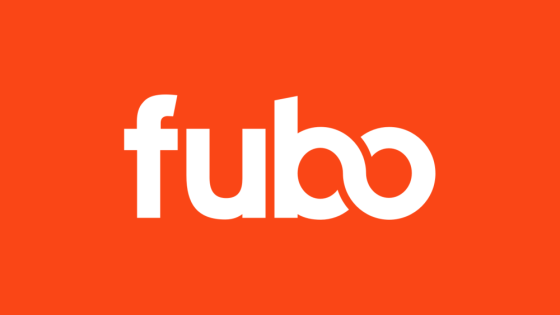BigBear.ai (NYSE: BBAI) has disappointed a lot of investors since its public debut on Dec. 8, 2021. The enterprise AI software company went public by merging with a special purpose acquisition company (SPAC), and its stock opened at $9.84 on its first day as a combined company. But today, it’s only worth about $1.50 a share.
BigBear.ai initially impressed investors with its lofty growth estimates. But like many other SPAC-backed companies, BigBear.ai missed its own outlook by a mile and became an easy target for the bears. Could BigBear.ai recover and expand into a tech titan like Microsoft (NASDAQ: MSFT) over the next few decades — or will its business model simply crumble?

What does BigBear.ai do?
BigBear.ai develops data mining and analytics tools that are used to aggregate information from disparate sources. These modules, which can be plugged into edge networking applications, can help organizations make faster data-driven decisions. Prior to its public debut, it integrated Palantir‘s tools into its own Observe, Orient, and Dominate modules.
In a pre-merger presentation, BigBear.ai claimed that it could grow its revenue at a compound annual growth rate (CAGR) of 40% from 2020 to 2023, expand its gross margin from 30% to 50% during that time, and keep its adjusted earnings before interest, taxes, depreciation, and amortization (EBITDA) margins in the high teens. In reality, its revenue only rose at a CAGR of 3.5% from 2020 to 2023, its gross margin dropped to 26%, and its adjusted EBITDA turned negative.
It blamed that slowdown on macro headwinds and the bankruptcy of a major customer, Virgin Orbit, but it also faces fierce competition from similar analytics platforms. Its CEO Reggie Brothers also abruptly resigned in October 2022.
Brothers’ successor, former IBM executive Mandy Long, tried to stabilize BigBear.ai in three ways: She oversaw an all-stock takeover of the AI vision technology firm Pangiam this March to expand its ecosystem and boost its revenue, secured more government contracts, and focused on cutting costs to right-size its business.
From 2023 to 2026, analysts expect BigBear.ai’s revenue to increase at a CAGR of 16% as it integrates Pangiam while the macro environment improves. They also expect its adjusted EBITDA to turn positive again in 2025. Those growth rates might seem tepid compared to its original forecasts, but its stock looks undervalued at 2 times this year’s sales.
But can we compare BigBear.ai to Microsoft?
Analysts expect BigBear.ai to generate $199 million in revenue in 2024. That would be comparable to Microsoft’s revenue of $198 million in fiscal 1986. Back then, Microsoft generated most of its revenue from its MS-DOS operating system, the XENIX enterprise OS, various program compilers, and office applications like Word, Chart, and Multiplan. It only launched its first version of Windows in late 1985.
But from fiscal 1986 to fiscal 2023, Microsoft’s annual revenue grew at a CAGR of 21% from $199 million to $211.9 billion. That robust long-term growth was driven by the rising adoption of Windows on PCs, the popularity of its Office productivity software, and its ongoing expansion into the cloud, mobile, gaming, and AI markets. It also acquired a long list of smaller companies to expand its software and hardware ecosystems.
When Microsoft was roughly the same size as BigBear.ai, it was already growing at a much faster rate and operating a more broadly diversified business. Microsoft was also firmly profitable; it generated a net profit of $39 million in fiscal 1986, which grew at a CAGR of 22% to $72.4 billion in fiscal 2023. BigBear.ai is expected to post a net loss of $161 million this year — and it’s expected to stay unprofitable for the foreseeable future.
Why BigBear.ai won’t become the next Microsoft
To evolve into the next Microsoft, BigBear.ai will need to stabilize its business, expand its portfolio, and turn a profit. Unless it can check those boxes, investors will dismiss it as another struggling tech company that can’t carve out its own niche. Even if BigBear.ai successfully scales up its business, it probably won’t dominate the data mining and analytics market in the same way Microsoft conquered its operating system and productivity software markets.
Based on these facts, it seems doubtful that BigBear.ai will ever become a trillion-dollar tech titan like Microsoft. However, it could still be an undervalued growth play if it finally gets its act together over the next few years.
Should you invest $1,000 in BigBear.ai right now?
Before you buy stock in BigBear.ai, consider this:
The Motley Fool Stock Advisor analyst team just identified what they believe are the 10 best stocks for investors to buy now… and BigBear.ai wasn’t one of them. The 10 stocks that made the cut could produce monster returns in the coming years.
Consider when Nvidia made this list on April 15, 2005… if you invested $1,000 at the time of our recommendation, you’d have $580,722!*
Stock Advisor provides investors with an easy-to-follow blueprint for success, including guidance on building a portfolio, regular updates from analysts, and two new stock picks each month. The Stock Advisor service has more than quadrupled the return of S&P 500 since 2002*.
*Stock Advisor returns as of May 13, 2024
Leo Sun has no position in any of the stocks mentioned. The Motley Fool has positions in and recommends Microsoft and Palantir Technologies. The Motley Fool recommends International Business Machines and recommends the following options: long January 2026 $395 calls on Microsoft and short January 2026 $405 calls on Microsoft. The Motley Fool has a disclosure policy.
Could BigBear.ai Become the Next Microsoft? was originally published by The Motley Fool
Source Agencies



